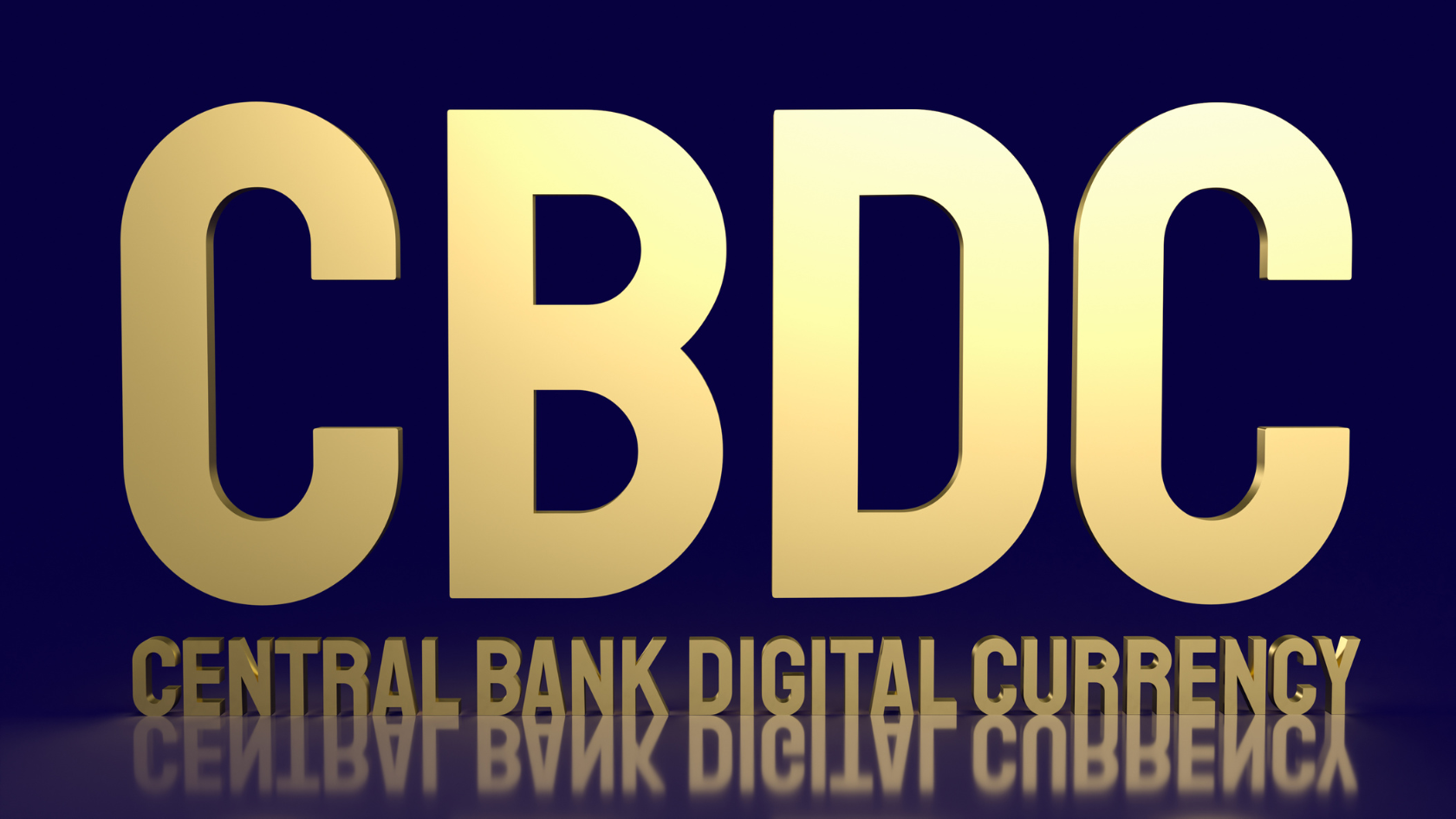The Future of Crypto: An Overview
The future of cryptocurrency is shrouded in uncertainty. But uncertainty isn’t always damaging; it may present unique opportunities. Inherent in uncertainty is an excitement for the future, a desire to see what comes next.
The crypto market may be in its infancy, but it has already significantly impacted the world. Crypto assets and blockchain technology can revolutionize how we interact with the internet, store and use value, and conduct business.
In the coming years, the industry will continue to grow and mature. More businesses will begin to accept cryptocurrency as payment, and more individuals will use it to buy goods and services. The future of money includes financial services without intermediaries, and crypto investors are well aware of where this development will occur.
In addition, we will see more clarity and perhaps even some friendly legislation toward miners, investors, and exchanges from the regulatory side. Crypto as an asset class will grow in popularity, and we’ll likely see higher valuations across the board than we see right now.
Lastly, on the technological side, we will see further development of blockchain applications and more widespread adoption of cryptocurrency as it penetrates different sectors of the economy.
In this article, we’ll outline some of the ways the cryptocurrency landscape may develop over the next few years and give you a glimpse into the exciting future of crypto.
Crypto Trends To Watch
1. Crypto as Legal Tender
On September 7th, 2021, El Salvador made history by becoming the first country to adopt Bitcoin as a legal tender. The move was met with mixed reactions, as some saw it as a way to increase economic activity while others raised concerns about the country’s financial stability.
President Nayib Bukele of El Salvador has been a vocal supporter of Bitcoin, and his administration introduced legislation that required businesses in the country to accept Bitcoin as payment.
While the results of El Salvador’s experiment are yet to be seen, it is a significant development nonetheless. Other countries may soon follow suit if El Salvador can show the benefits of using cryptocurrency as a legal tender. This could lead to a domino effect of cryptocurrency adoption and be a significant catalyst for mainstream adoption.
Since El Salvador’s “crypto shot heard around the world,” several countries — specifically South American countries — have announced their intention to study cryptocurrency regulation and consider crypto a legal tender.
The catalyst to turn to Bitcoin and other cryptocurrencies as legal tender may be due to the current global economic climate. With traditional fiat currencies (such as the U.S. dollar) losing purchasing power to inflation and central banks worldwide printing money to combat the effects of the pandemic, many are looking for alternative strongholds of value.
Countries like El Salvador, which use the U.S. dollar as their primary currency, don’t experience the social benefits from dollar printing — only the adverse effects. In essence, the United States can print money for social programs and stimulus measures, benefits that go to Americans but not to those who hold U.S. dollars outside of the country.
Economic dependence on the U.S. dollar creates a certain degree of vulnerability, and countries will likely begin to adopt crypto as legal tender to hedge against this risk.
2. Mass Market Adoption of Cryptocurrency
For cryptocurrency to become truly mainstream, it needs to be accessible and easy for the average person to use. We are already seeing this happen with the development of user-friendly wallets and applications that make buying, selling, and spending crypto a breeze.
As cryptocurrency becomes more mainstream, we will see more businesses accept it as payment. This could lead to a virtuous circle, where more companies accepting crypto leads to more people using crypto, which leads to even more businesses accepting crypto.
In addition, we will see the development of more applications for cryptocurrency, which will make it even more helpful in our everyday lives. For example, crypto debit cards allow you to spend your cryptocurrency anywhere that accepts Visa or Mastercard.
We will likely see the development of more products like this, making it even easier to use crypto in our everyday lives. Examples of this are tipping platforms that allow you to tip content creators in cryptocurrency or loyalty programs that give you rewards in crypto for shopping at certain stores.
Societally, we’ll see more integrations of cryptocurrency into our lives. For example, we may see our salaries being paid in cryptocurrency or being able to pay our rent and other bills in crypto.
We might even see cryptocurrency as a form of government-issued currency (CBDC), which we’ll discuss later.
3. Meme Coins Disappear
The rise of meme coins like Dogecoin (DOGE) and Safemoon (SAFE) has been one of the most exciting aspects of the cryptocurrency markets in the past year. Meme coins are often created as a joke and have no severe use case but have seen their prices soar as investors pile in.
Technology is about utility, and while cultural relevance may help a project find an audience, it will only get you so far.
Unfortunately, the crypto world is littered with the remains of coins that initially found success by riding on the back of a popular meme but failed to offer anything else of value. This will likely continue in the coming year as investors become savvier and focus on projects with actual utility.
This is not to downplay the significance of meme coins, however. They have played an essential role in bringing new people into the crypto world and helping to popularize the technology. They have also proved the existence of a strong interest in novelty investments and a market for lighthearted projects.
Disruptive technologies require cultural stickiness; they need to become a part of the zeitgeist to take off.
So while meme coins may not be the most serious projects in the crypto space, they’ve already played an essential role in bringing awareness to cryptocurrencies and helping them to become more mainstream. Their days of explosive growth may be behind them, and investors will be looking for more serious projects in the coming years.
4. DeFi (and GameFi) Grow Mainstream
Decentralized finance (DeFi) protocols have been some of the most active projects in the crypto space over the past years, with a wide range of projects offering everything from lending and borrowing platforms to stablecoins and tokenized BTC.
The total value locked (TVL) in DeFi protocols grew to almost $200 billion in 2021, up from just $18 billion at the start of the year.
This growth was driven by a combination of yield-hungry investors looking for alternatives to traditional financial products and the launch of several high-profile projects. Currently, the TVL in DeFi protocols rests at around $50 billion.
As DeFi matures, we will likely see a consolidation of protocols as the market winnows out the weaker projects. However, we are also likely to see projects that promise astronomical yields give way to more sustainable models, providing retail investors with stable and more predictable returns.
We are also likely to see the continued growth of so-called “GameFi” protocols, which use gaming mechanics to incentivize users to hold and use their tokens. GameFi ” uses gaming mechanics and techniques in non-gaming contexts to engage, motivate, or influence behavior.”
GameFi incentivizes Play-to-Earn, where users are rewarded for their time and attention with in-game assets with real-world value. For example, Axie Infinity allows users to breed, raise, and battle fantasy creatures called “Axies.” These Axies can be used in the game or sold for Ethereum (ETH).
With the rise of non-fungible tokens (NFTs), we will likely see more GameFi protocols emerge that use NFTs as in-game assets.
This could create a virtuous circle in which users are incentivized to hold and use a project’s tokens to earn NFTs, which can then be sold for more of the project’s tokens, leading to more growth.
Notable Coins You Should Follow
1. Bitcoin
The grandfather of all cryptocurrencies, Bitcoin (BTC) is the world’s most widely-held and traded digital asset. BTC is often seen as a store of value and is a popular choice for investors looking for exposure to the crypto space.
Institutional investors, retail investors, and governments alike have all but confirmed their interest in BTC. Something to watch out for in the coming years is Bitcoin’s Lightning Network, which makes Bitcoin transactions instant, nearly free, and scalable.
Companies like CashApp, Strike, and more already implement the Lightning Network, and its adoption is only likely to grow in the coming years. This could make Bitcoin viable for day-to-day transactions and lead to even more mainstream adoption.
2. Cardano
Cardano (ADA) is a smart contract platform that aims to solve issues plaguing Ethereum, such as scalability and sustainability. Cardano proponents believe it offers advantages over Ethereum regarding technology and governance.
While Cardano has yet to implement a killer application or use case, its development team has a strong track record and is committed to building a robust platform.
3. Ethereum
The most effective platform for decentralized applications (dapps), Ethereum (ETH) is also a popular choice for investors looking for exposure to the crypto space.
Most DeFi protocols are built on Ethereum, and its smart contract capabilities allow many use cases. In addition, Ethereum recently transitioned to Proof-of-Stake (PoS), which could lead to increased scalability and improved energy efficiency.
Ethereum’s goal of becoming the “world’s computer” is lofty, but if it succeeds, ETH could see widespread adoption and become even more integral to the crypto space.
From supply chain tracking to identity management, there are several potential use cases for Ethereum that could lead to its mass adoption.
4. BNB
Binance Coin (BNB) is the native token of the Binance ecosystem, which includes the Binance DEX, Binance.com, and Binance Academy.
Binance is the largest cryptocurrency exchange in the world, and its native token offers several benefits to users, including discounted trading fees and accelerated token growth. As the Binance ecosystem continues to grow, we can expect to see more use cases for BNB emerge, which could lead to increased demand for the token.
5. XRP
XRP is the native token of the Ripple network, a payments platform that aims to provide fast, affordable, and reliable global payments.
While XRP has been largely overshadowed by other payment protocols in the past year, especially with instant payment solutions like the Lightning Network, XRP still has a large and loyal following. XRP is also one of the most actively-traded digital assets, which could lead to increased liquidity and more mainstream adoption.
XRP is not without its staunch critics, but if Ripple can continue growing its network and increasing adoption, XRP could become a significant player in the payments space.
Potential Roadblocks in the Next Decade
1. Regulations
Governments worldwide have been hesitant to regulate the crypto space, as its original ethos was built on decentralization and freedom from government control. However, as the crypto space has grown, so needs regulations.
Governments are now starting to catch up, and we can expect to see more regulations in the coming years. While some believe that laws will be a positive for the crypto space, as they will provide more legitimacy and certainty, others think that they will stifle innovation and the growth of the space.
Know-you-customer (KYC) and anti-money laundering (AML) laws, while necessary for preventing crime, could also hurt privacy-focused cryptocurrencies like Monero (XMR) and Zcash (ZEC).
These regulations could also create a two-tiered system where only those with access to traditional financial institutions can participate in crypto. Furthermore, KYC and AML laws often lead to arbitrary or unwarranted freezes or shutdowns of crypto exchanges and accounts, as we have seen in the past.
In the mining space, we’ve already seen countries like China outright ban Bitcoin mining, and we may see more countries following suit in the future.
This could lead to a centralization of mining power, as those with access to cheap, legal electricity and the latest mining hardware will have a greater chance of success.
The regulatory environment is as unpredictable as ever, and it’s hard to say how it will impact the crypto space in the coming years.
2. (Continued) Negative Press
The crypto space has had its fair share of negative press, which will likely continue in the next decade. Whether it’s stories of hacks and scams or criticism from traditional financial institutions, the crypto space often finds itself in the news for all the wrong reasons.
This negative press can lead to FUD (fear, uncertainty, and doubt), which can cause investors to sell off their assets and a general loss of confidence in the space.
The negative press also has a way of snowballing, with one story leading to another and another, until it feels like the whole space is under attack, compounding damage that can be difficult to recover from. That said, the crypto space has shown time and time again that it is resilient and that it can weather storms, as evidenced by its continued growth despite all the negative press.
3. General Hesitancy Over Crypto Volatility
Although historic crypto volatility has begun to even out, and Bitcoin is currently less volatile than the Nasdaq and S&P 500, volatility is still one of the biggest potential roadblocks to mainstream crypto adoption.
For example, when prices constantly fluctuate, it’s difficult for merchants to accept crypto as a form of payment, as they don’t know how much the currency will be worth when the transaction is processed. It may be a few years before you can buy things on Amazon directly with crypto instead of your credit card.
Volatility can repel potential investors, as well. Why would someone invest in an asset that could lose much of its value overnight? Why would someone put their savings into something so unpredictable? These are valid concerns and may often keep people from investing in crypto, even if they’re interested in the technology.
Crypto Trends in the Immediate Future: 2023
Some additional foreign and domestic regulations — The U.S. Securities and Exchange Commission (SEC) has already begun to crack down on ICOs and crypto exchanges. We will likely see more action from the SEC in the coming years.
In other countries, we are seeing a patchwork of regulations, with some outright banning crypto while others embrace it. We may see more countries following China’s lead and cracking down on mining and trading while others will continue to develop friendly environments for the industry.
Cryptocurrency payments in mass markets — The volatile nature of cryptocurrency prices has made it difficult for merchants to accept crypto as a form of payment, but this may begin to change in the next decade.
With stablecoins, merchants can buy crypto without worrying about fluctuating prices before processing the transaction. This could lead to greater adoption of crypto payments, as merchants will no longer have to worry about accepting an amount that could be worth less by the time it’s processed.
On the other hand, Bitcoin and other crypto are less volatile than some countries’ currencies (e.g., Turkish Lira), making Bitcoin a more stable store of value than those fiat currencies. So we could also see increased use of Bitcoin and other cryptocurrencies as payment in countries with volatile fiat currencies.
Crypto-backed ETFs — While crypto-based exchange-traded funds (ETFs) have been met with resistance from the SEC in the past, we may see crypto ETFs become available in the next decade. This would provide investors with a way to invest in crypto without actually buying and storing the currency, making it a more accessible investment for the average person.
The Future of Crypto: FAQs
1. What Is Digital Gold, and Why Does It Matter?
Digital gold is a term used to describe Bitcoin and other cryptocurrencies as a store of value. Unlike fiat currencies, which can be printed at will, Bitcoin has a hard cap of 21 million coins. This makes it a more scarce asset and less susceptible to inflation.
While other assets can be used as a store of value (such as gold), Bitcoin has advantages over gold. For one, it is much easier to transport and store.
Gold is a physical asset, so it must be stored safely. Bitcoin, on the other hand, can be stored on a computer or phone.
Second, Bitcoin is much more divisible than gold. One Bitcoin can be divided into 100 million satoshis (the smallest unit of a Bitcoin). This makes it easier to use Bitcoin as a form of payment, as you can send any amount, no matter how small.
Finally, Bitcoin is much more accessible than gold. You can buy it online, and there are even ATMs where you can buy Bitcoin with cash.
2. How Do CBDCs work?
Also known as central bank digital currencies, CBDCs are digital versions of fiat currencies. They are issued and regulated by central banks and can be used to make purchases in the same way that you would use a credit or debit card.
CBDCs will undoubtedly significantly impact the financial system, as they could replace cash altogether. While we are still in the early stages of CBDC development, we may see widespread adoption of these digital currencies in the next decade — perhaps even a few years.
3. How Will Stablecoins Affect Crypto’s Future?
Stablecoins are a type of cryptocurrency pegged to an asset with a stable value, such as the U.S. dollar. The goal of stablecoins is to provide a more stable alternative to cryptocurrencies like Bitcoin, which can be pretty volatile.
While there are many different types of stablecoins, they all aim to achieve the same thing: price stability. This makes them a more attractive option for merchants, who can accept stablecoins without worrying about fluctuating prices before the transaction is processed.
It also makes them a more viable option for real-world scenarios, such as buying a cup of coffee or paying rent. While stablecoins have yet to reach adoption beyond arbitrage and other trading mechanisms, they may become more widely used in the next decade.
Takeaways
The future of cryptocurrency is shrouded in uncertainty. However, some potential applications could see widespread adoption in the next decade. These include digital gold, CBDCs, and stablecoins.
Here are some crypto trends to watch crypto adoption as legal tender: mass market adoption of cryptocurrency, the likely disappearance of meme coins, and the mainstreaming of DeFi and GameFi platforms.
Roadblocks to crypto adoption: regulations, continued negative press, and persistent hesitancy over price volatility.
The future is uncertain, but that doesn’t mean you can’t make predictions. To make wise predictions, however, you need to be informed. That’s where American Crypto Academy comes in.
American Crypto Academy is run by a team of experts, and we’re dedicated to making cryptocurrency and the blockchain easy, with educational resources and professional programs taught by carefully chosen industry professionals.
Check out our blog or check out our other community resources to learn more.
Sources:
Turkish Lira Is Now More Volatile Than Bitcoin | Coindesk
Bitcoin’s volatility falls below Nasdaq and S&P 500’s for first time since 2020 | CNBC





